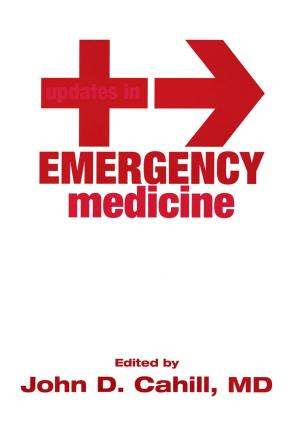Extraordinary Disorders of Human Behavior
Nonfiction, Health & Well Being, Medical, Specialties, Internal Medicine, Endocrinology & Metabolism| Author: | Claude T. H. Friedmann, Robert A. Faguet | ISBN: | 9781461592518 |
| Publisher: | Springer US | Publication: | December 6, 2012 |
| Imprint: | Springer | Language: | English |
| Author: | Claude T. H. Friedmann, Robert A. Faguet |
| ISBN: | 9781461592518 |
| Publisher: | Springer US |
| Publication: | December 6, 2012 |
| Imprint: | Springer |
| Language: | English |
Clinicians have long been fascinated by the rare and exotic in med icine. Similarly, psychiatrists and mental health professionals have been intrigued by the uncommon and extraordinary syndromes which, despite their rarity, have much to teach us about the limitless forms of human adaptation. Of particular interest is the fact that fragments and partial expressions of these rare disorders are often encountered in the dreams and fantasies of the "ordinary" patient. For this reason, the understanding and insights collected in this volume are likely to have clinical usefulness far beyond those rare occasions when we encounter the exotic in its fully developed form. These disorders demonstrate the complex interplay between intra psychic dynamic forces and the cultural influences which act to shape overt symptomatology. The section on extraordinary syndromes from non-Western cultures demonstrates the universality of the psychody namic roots of human suffering, despite the seemingly strange furms in which this suffering is expressed. As clinicians we are too often restricted by ethnocentric attitudes and culturally determined stereotypes. This volume provides a stimulating and enjoyable opportunity to reach beyond those limitations.
Clinicians have long been fascinated by the rare and exotic in med icine. Similarly, psychiatrists and mental health professionals have been intrigued by the uncommon and extraordinary syndromes which, despite their rarity, have much to teach us about the limitless forms of human adaptation. Of particular interest is the fact that fragments and partial expressions of these rare disorders are often encountered in the dreams and fantasies of the "ordinary" patient. For this reason, the understanding and insights collected in this volume are likely to have clinical usefulness far beyond those rare occasions when we encounter the exotic in its fully developed form. These disorders demonstrate the complex interplay between intra psychic dynamic forces and the cultural influences which act to shape overt symptomatology. The section on extraordinary syndromes from non-Western cultures demonstrates the universality of the psychody namic roots of human suffering, despite the seemingly strange furms in which this suffering is expressed. As clinicians we are too often restricted by ethnocentric attitudes and culturally determined stereotypes. This volume provides a stimulating and enjoyable opportunity to reach beyond those limitations.















